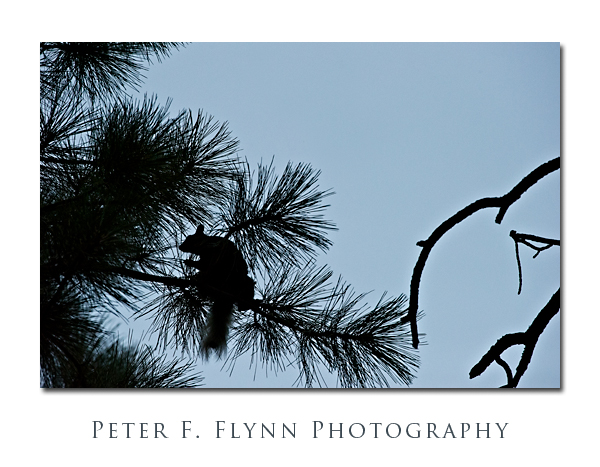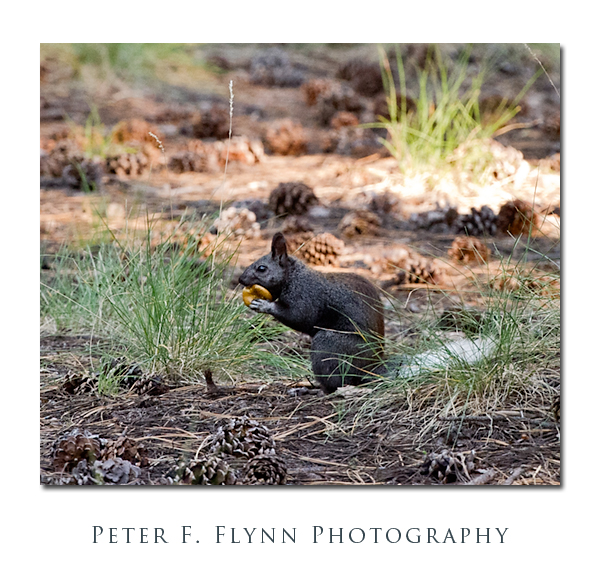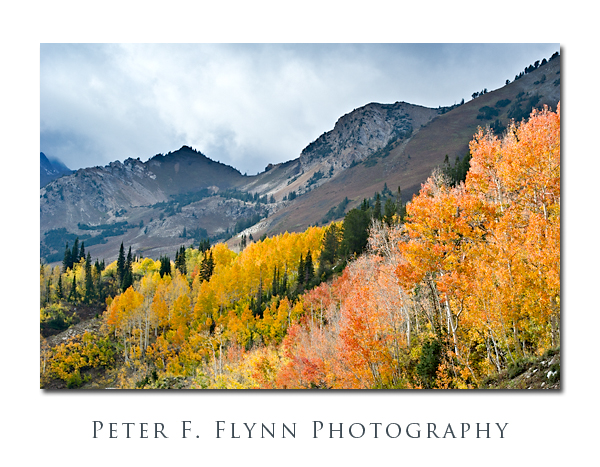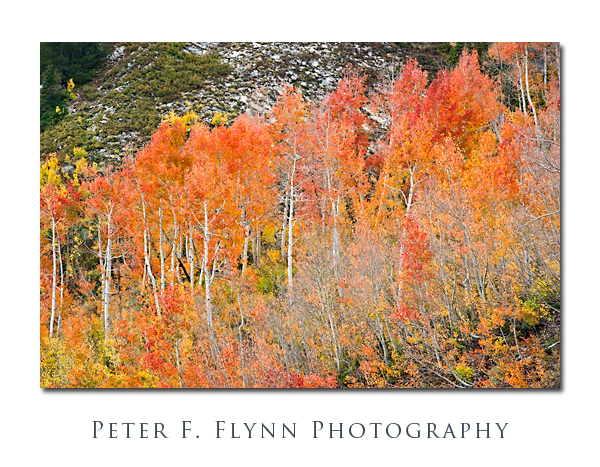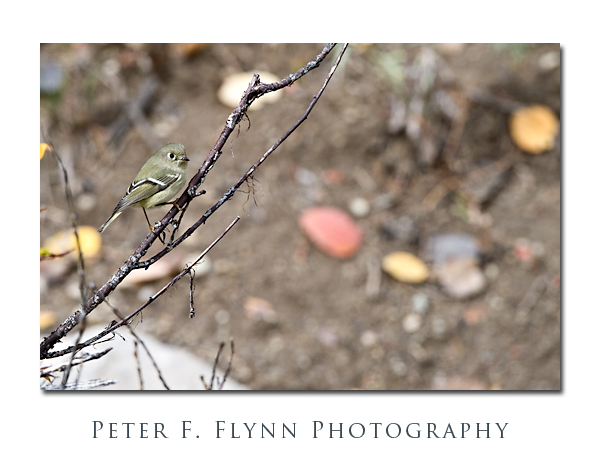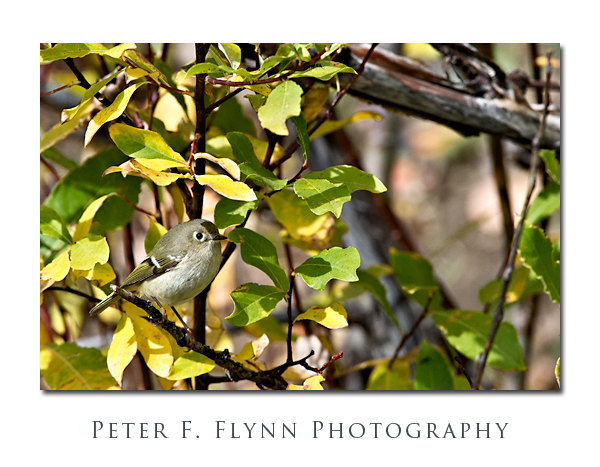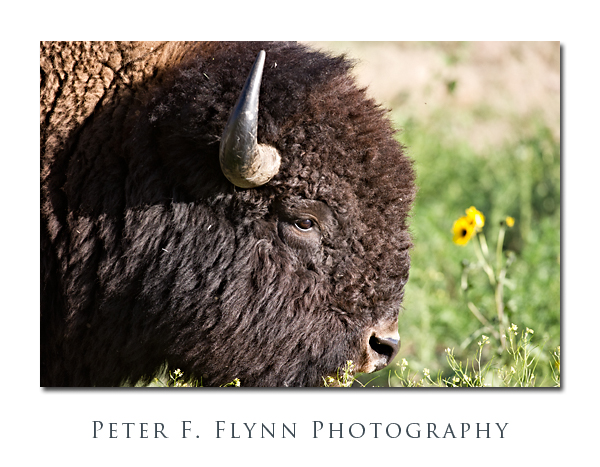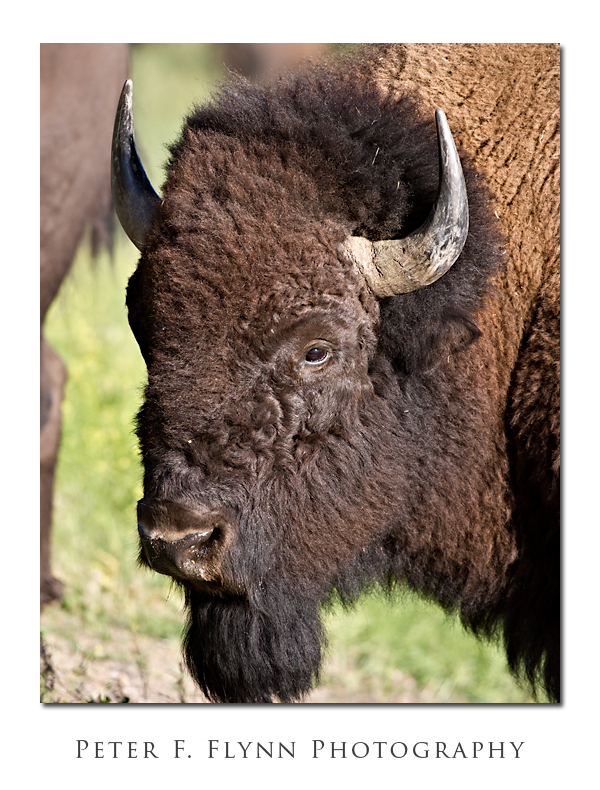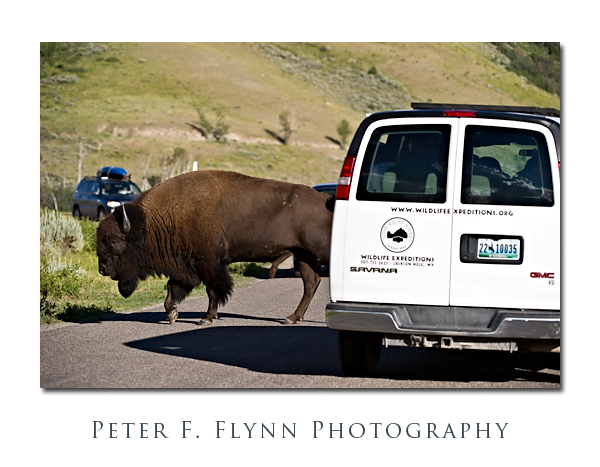Grand Canyon, North Rim. You will not find Sciurus aberti kaibabensis anywhere else on the planet. Nope, you have to come here to see them, and they seem know it… They are beautiful animals, with tufted ears, a dark underbelly, and most remarkably, a striking bushy white tail.
Chat up any Park Service Ranger and they’ll claim that there are tons. Lies. If you come to photograph this unique animal, you should be prepared for the harsh truth. There are one or two. Okay, perhaps there are more, but it doesn’t matter, because at any particular moment, only one or two of the little buggers are scampering around the Kaibab Plateau – it’s one of the rules of their little guild.
The Kaibab Plateau is an area of approximately 800 square miles in northern Arizona in a narrow swath lying between Jacob Lake to the north and the canyon rim to the south. The Kaibab Squirrel is cousin to the Abert’s Squirrel (thus aberti kaibabensis), which you will find in abundance in a bunch of subspecies along the south rim. The obvious physical barrier provided the geological isolation that allowed the unique north rim subspecies to evolve.
This squirrel makes it home in the Ponderosa Pines that are common along the north rim forest, and its natural food consists for the most part of the seeds of Ponderosa pine cones and small fungi that litter the floor around the trees. The HP and I tracked this beastie throughout our visit, but saw two specimens (or perhaps the same animal twice) – both times in the general area near the North Rim Campground. The Campground most probably provides the squirrels with a chance to supplement their diet with more worldly fare, e.g., cheese, deli meats, crackers, bread, and so forth.
Images of the Kaibab Squirrel were recorded on August 26, 2010, using the Nikon D3s and the AF-S VR Zoom-NIKKOR 200-400mm f/4G IF-ED lens at 400mm. Exposure was in the neighborhood of f/8 at 1/160s, ISO 8000 – yeah, I really do think you need the D3s to pull this off.
Copyright 2010 Peter F. Flynn. No usage permitted without prior written consent. All rights reserved.
